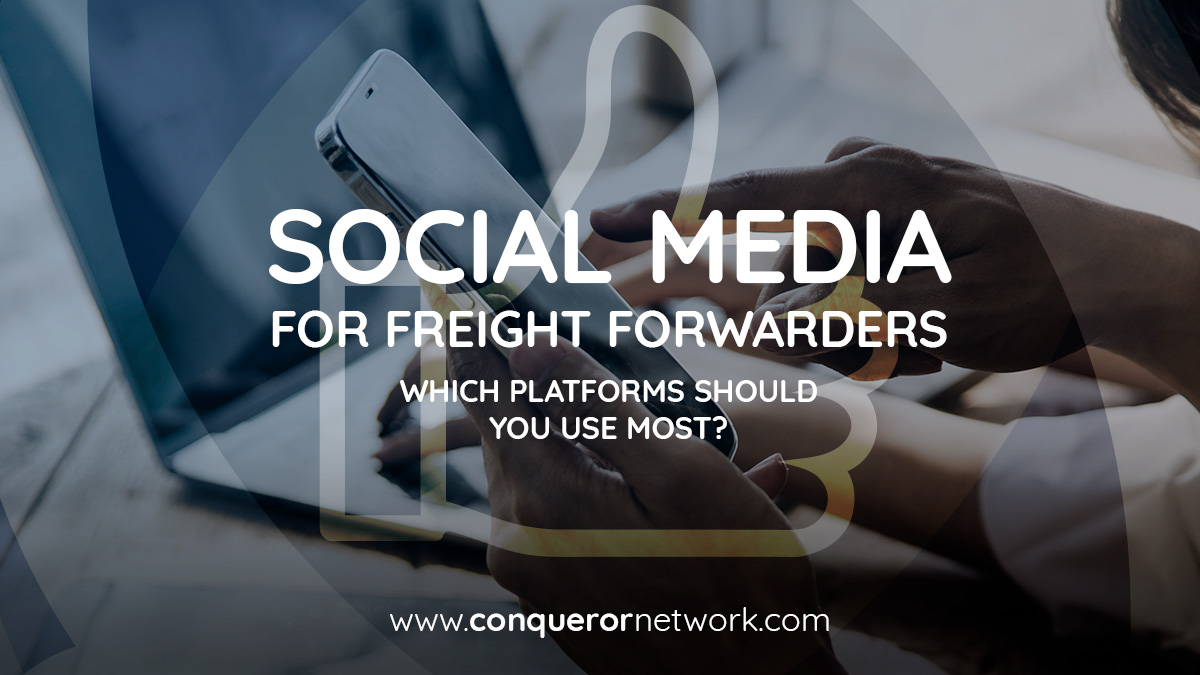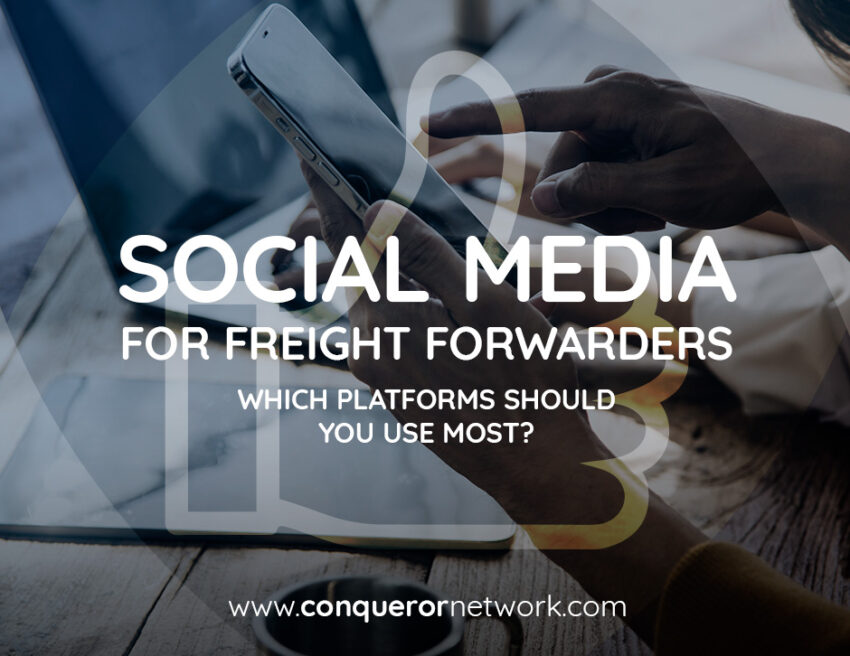Is your freight forwarding company fully harnessing the power of social media in 2025, or are you still just posting container photos once a month and calling it a day? In a rapidly evolving digital landscape, social media is no longer just a nice-to-have—it’s a vital tool for client acquisition, brand visibility, and global networking. Logistics companies trying to build their brand, attract shippers, or connect with reliable partners, you simply can’t afford to ignore the influence of social media. But with so many platforms out there—each with its own quirks and audience—how do you decide where to focus your efforts?

That’s where we come in. This blog is your up-to-date guide to the top 5 social media platforms every freight forwarder should focus on in 2025. From building a powerful digital presence to fostering real business leads, these platforms are changing the way the freight forwarding industry connects and grows.
1. LinkedIn – The king of B2B connections for logistics companies
If you’re not using LinkedIn in 2025, you’re essentially invisible to much of the freight forwarding world. LinkedIn remains the most relevant and effective platform for B2B companies—and for social media for freight forwarders, it is an indispensable tool. Unlike Instagram or TikTok, this platform is tailor-made for professionals looking to expand networks, share industry insights, and build authority.
For freight forwarders, LinkedIn offers an opportunity to post updates on new shipping routes, celebrate achievements, share thought leadership articles, and even recruit new team members. Most importantly, it provides a trusted environment to connect with freight agents, logistics managers, import-export businesses, and network partners around the world.
In 2025, LinkedIn’s AI-enhanced algorithm helps push your content to the right industry professionals, so consistent posting combined with strategic hashtags can dramatically improve your reach. If you specialize in project cargo or have a new warehousing facility, LinkedIn is where you want to tell your story.
2. Facebook – The legacy platform is still pulling its weight
It may not be the trendiest platform out there, but Facebook still holds massive relevance in the world of social media for freight forwarders. While many younger users have shifted to Instagram or TikTok, Facebook continues to be a hub for business pages, industry groups, and community engagement.
Freight forwarders use Facebook to post company updates, photos of successful shipments, industry news, and case studies. What makes Facebook stand out is its ability to support long-form posts, event announcements (such as logistics trade shows or annual meetings), and customer service via Messenger.
Additionally, Facebook Ads can be targeted with impressive precision—by location, industry, job title, and interests. For small and mid-sized forwarders who don’t have the marketing budgets of multinationals, Facebook Ads can be a game-changer in gaining visibility with local exporters or importers.
3. Instagram – Visual Storytelling for logistics companies
It might seem surprising to find Instagram on a list of essential social media for freight forwarders. After all, isn’t it all fashion influencers and food pics? Not anymore. In 2025, Instagram has evolved into a visual storytelling platform for brands in all industries, including freight forwarding.
Whether you’re showing off behind-the-scenes footage of your loading operations, sharing reels of a complex cargo project, or posting a time-lapse of containers being offloaded, Instagram offers a unique way to showcase your company culture and capabilities.
With features like Stories, Reels, and interactive polls, it’s easier than ever for freight forwarding companies to connect their audience in an engaging and informal way. Plus, logistics buyers—especially from younger, digitally-native companies—are increasingly searching for partners who have an active and trustworthy digital presence. Your Instagram profile could be the difference between getting that email inquiry or being skipped entirely.
4. YouTube – Long-form video for in-depth engagement
Video marketing continues to dominate, and YouTube remains the #1 platform for long-form content. For freight forwarders looking to demonstrate expertise, showcase facilities, or explain complex shipping processes, YouTube is a goldmine.
In 2025, successful freight forwarding companies are uploading content such as client testimonials, warehouse tours, “day in the life” vlogs from their operations team, customs clearance guides, and even live Q&A sessions. Not only does this content help potential clients understand your services, but it also boosts SEO—because Google owns YouTube, well-optimized videos often appear at the top of search results.
Another advantage of YouTube is its ability to build trust. Seeing your team in action, hearing your clients speak on camera, or watching how you handle challenges gives viewers confidence in your company. In the competitive world of logistics, where trust is everything, YouTube can be your silent salesperson.
5. TikTok – The wild card with surprising B2B potential
TikTok might not be the first platform that comes to mind when you think of social media for freight forwarders, but in 2025, it’s proving to be more than just a hub for dance challenges. Short, catchy, and often humorous videos have a remarkable ability to go viral—and freight forwarders are starting to take advantage of this.
From “a day at the port” clips to packaging fails (and how you fixed them), TikTok gives your brand a human face. It’s also a place where logistics professionals can find and follow each other using niche hashtags like #freightforwarderlife or #logisticsexplained.
The real magic of TikTok lies in its reach. A well-crafted, entertaining video can get tens of thousands of views in days—even for small companies. And now that TikTok for Business is offering better analytics and ad services, the platform is gradually becoming a serious tool in the logistics marketer’s toolkit.
Why choosing the right platforms matters in 2025
Social media for logistics companies isn’t about chasing trends. It’s about meeting your audience where they already are. In 2025, decision-makers in logistics are online more than ever, and they’re using social platforms to evaluate vendors, get recommendations, and stay informed about the industry.
Instead of spreading yourself thin across every platform, choose two or three where your ideal audience spends time and commit to posting consistently. Whether it’s educational content on LinkedIn, behind-the-scenes videos on Instagram, or client interviews on YouTube, each post helps build credibility, generate leads, and keep your business top of mind.
Final thoughts
Freight forwarding is a global, relationship-driven industry—but that doesn’t mean it has to remain offline. The top 5 social media platforms covered here—LinkedIn, Facebook, Instagram, YouTube, and TikTok—each offer unique advantages for showcasing your capabilities and building trust in a crowded market.
If you’re serious about growing your brand and attracting quality leads in 2025, make social media a core part of your strategy. Use these platforms not just to promote your services, but to tell your story, engage your audience, and stand out as a forward-thinking logistics partner.


